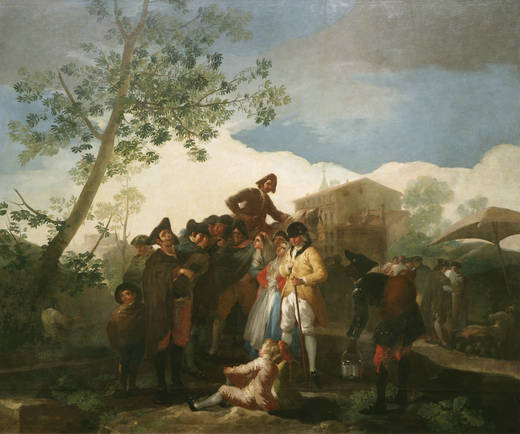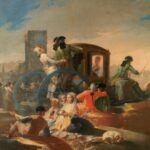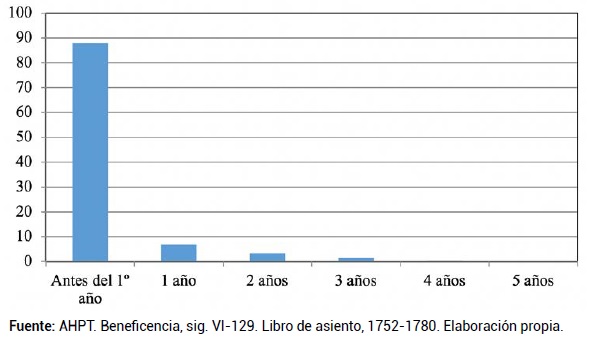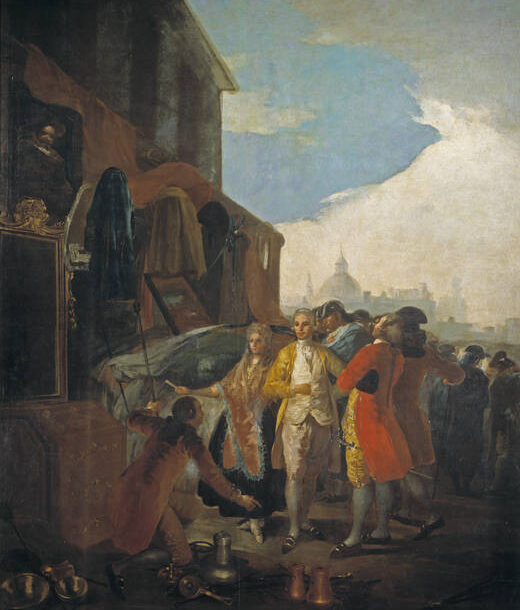
The complex scene depicted by Goya reflects life in the city in an everyday street manner. A Valencian cacharrero (identified by his characteristic attire) distributes merchandise on the ground that he sells to two young girls and an old woman. In the background, a carriage rushes past, with an elegant lady inside, watched by two gentlemen seated with their backs to it. Beneath this aspect of a bustling market scene lies another of unfulfilled desires: the young men in front of the vendor long for the beautiful earthenware pots, a symbol of feminine fragility, while the gentlemen seated on the straw gaze at the aristocratic lady hurrying past in her carriage. The resulting tapestry hung in the dining room of the Princes of Asturias (the future Charles IV and Maria Luisa of Parma)
Collection: Images
Project: 3. Rural world and urban world in the formation of the European identity., 4. Family, daily life and social inequality in Europe.
Chronology: XVIII
Scope: Secondary Education, Baccalaureate, University
Resource type: Image
Format: Oil on canvas (259 x 220 cm)
Source: Museo del Prado (Madrid)
Language: Spanish
Date: 1778-1779
Owner: Álvaro Romero González (Modernalia)
Identifier: P000780
Copyright: Museo del Prado (Madrid)
Abstract: Goya portrayed this scene in which the potter was a character dedicated to selling everyday objects as merchandise during the 18th century
Image
Tags








